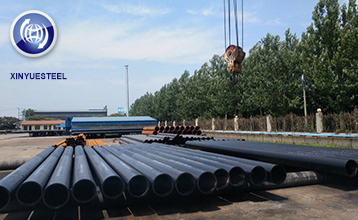Analysis on the production and operation of China's refractory industry in the first half of 2020
Sep. 10, 2020
Refractory production situation
From January to June, the national output of refractory materials for the same caliber was 10.4822 million tons, a year-on-year decrease of 13.75%. Among them, the output of dense shaped refractory products was 5.6107 million tons, a year-on-year decrease of 16.34%; the output of thermal insulation refractory products was 312,000 tons, an increase of 5.94% year-on-year; the output of unshaped refractory products was 4.5596 million tons, a year-on-year decrease of 11.51%. Among the dense shaped products, carbon-containing products were 1,386,500 tons, a year-on-year decrease of 3.35%, and functional products were 233,200 tons, a year-on-year decrease of 14.4%. The large decline in dense shaped products is mainly due to the greater impact of the epidemic on refractory materials used in infrastructure.

The output of the main refractory production provinces (cities) also declined to varying degrees. In the first half of this year, Henan’s output was 3.3531 million tons, down 36% year-on-year; Liaoning’s output was 2.203 million tons, down 2.22% year-on-year; Shandong’s output was 1.2354 million tons, down 3.37% year-on-year; Jiangsu’s output was 722,700 tons, down year-on-year 5.53%; Zhejiang's output was 697,900 tons, a year-on-year decrease of 13%. It should be noted that due to the partial adjustment and optimization of the statistical method of the China Refractory Industry Association this year, the benchmark volume for the first half of the year is selected based on half of the final annual output verified at the end of 2019, so the year-on-year data has a large deviation. In addition, the reason for the increase in output in some areas is that associations at all levels encourage more companies to report, and the number of samples has increased compared with the previous year. The adjustment of statistical attribution also caused some changes.
On the whole, the production of refractory materials in most regions and enterprises in the first half of 2020 will be relatively affected by the epidemic.
Import and export trade of refractory raw materials
From January to June, the total import and export trade of refractory raw materials nationwide was US$1.618 billion, a decrease of 20.01% from the same period last year. Among them, export trade volume was US$1.501 billion, a year-on-year decrease of 18.28%; import trade volume was US$117 million, a year-on-year decrease of 37.09%.
The total export volume of refractory raw materials nationwide was 2.801 million tons, a year-on-year decrease of 4.76%. Among them, the export volume of refractory raw materials was 2.0637 million tons, a year-on-year decrease of 2.4%; the export volume of refractory products was 737,800 tons, a year-on-year decrease of 10.80%.
In terms of export prices, the export volume of fused magnesia increased slightly year-on-year, about 5.72%, but the average export price still dropped significantly; the export volume of brown corundum fell sharply compared with the same period, but the average export price increased slightly. The export volume and average export price of refractory clay, sintered magnesia, white corundum, and silicon carbide have all declined to varying degrees.
In terms of refractory product exports, the export volume of alkaline products increased slightly by 1.34% year-on-year, while the average export price fell sharply year-on-year; the export volume of aluminum and silicon products fell significantly year-on-year by 26.98%, but the average export price increased by 15.54% year-on-year; other refractory products Export volume decreased by 4.89% year-on-year, and average export price decreased by 11.77% year-on-year.



